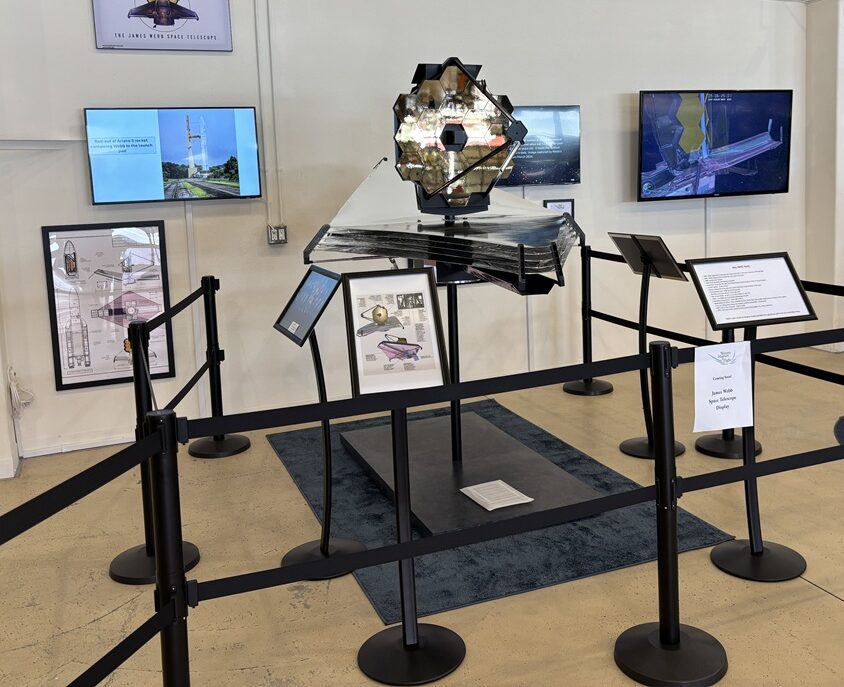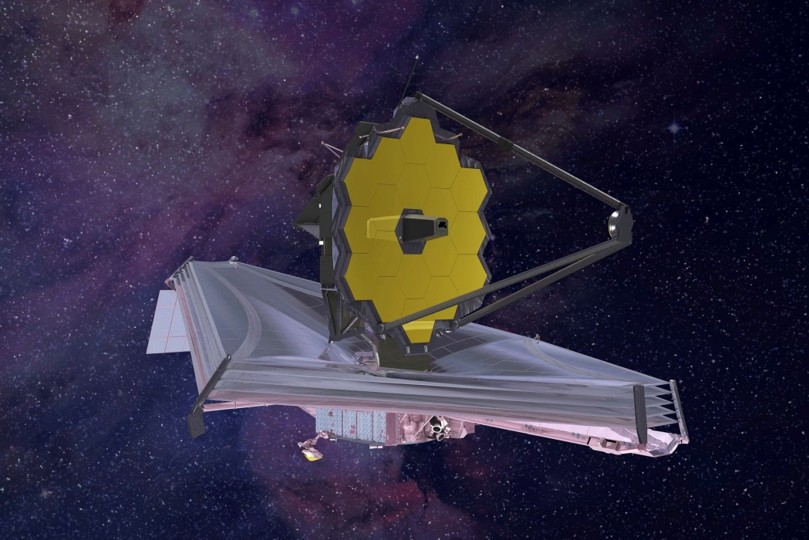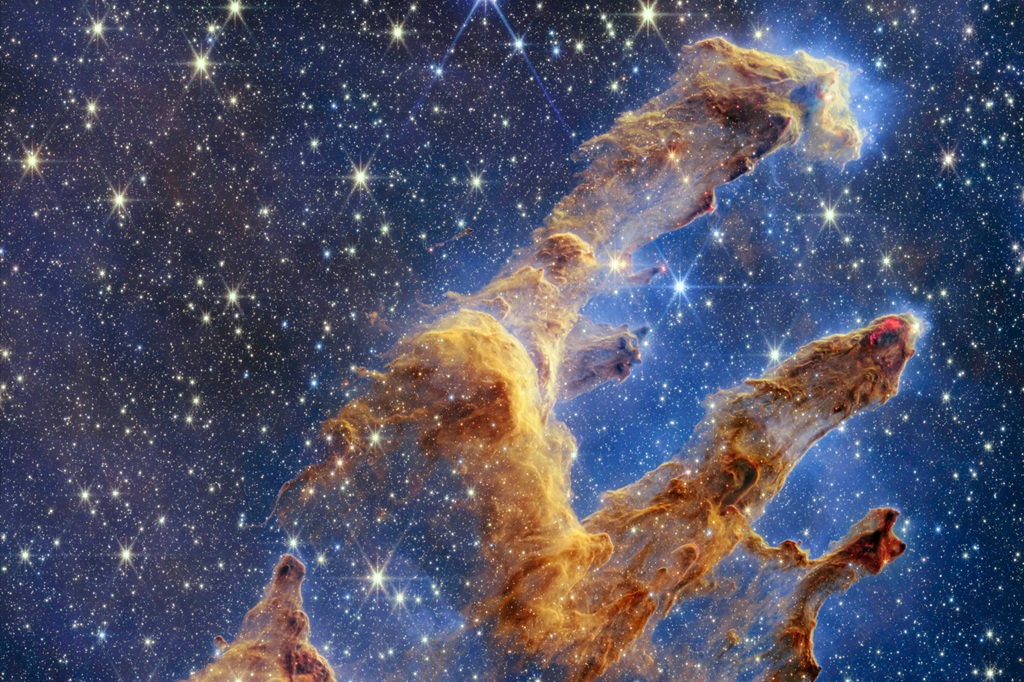The James Webb Space Telescope (JWST) is a cutting-edge observatory built to explore the cosmos using infrared astronomy. As the largest space telescope ever launched, it’s equipped with highly sensitive and high-resolution instruments, enabling it to detect celestial objects that are too distant, faint, or ancient for the Hubble Space Telescope to capture. Webb is designed to observe the universe in the infrared spectrum, allowing it to see through dusty clouds and observe the earliest galaxies and stars formed after the Big Bang; 13.5 billion years ago, and look for other planetary systems for the building blocks of life
Though Webb’s mirror spans 2.7 times the diameter of Hubble’s, the resolution is comparable due to the nature of infrared light. Since infrared wavelengths are longer than visible light, larger mirrors are needed to gather enough data and produce crisp images. That’s why Webb’s massive mirror is essential—it compensates for observing in lower-frequency ranges.
Launched on December 25, 2021 aboard an Ariane 5 rocket from Kourou, French Guiana, Webb arrived at its orbit near the Sun–Earth L2 Lagrange point in January 2022—positioned about 1.5 million kilometers (930,000 miles) from Earth. The first breathtaking image was released on July 11, 2022.
Led by NASA, the JWST project was developed in partnership with the European Space Agency (ESA) and the Canadian Space Agency (CSA). NASA’s Goddard Space Flight Center oversaw development, while operations are handled by the Space Telescope Science Institute at Johns Hopkins University. Aerospace company Northrop Grumman served as the primary contractor.
Named in honor of James E. Webb, NASA’s administrator during the Mercury, Gemini, and Apollo missions, the telescope features an extraordinary mirror composed of 18 hexagonal segments made from gold-coated beryllium. Together, these form a 6.5-meter-wide mirror (21 feet), a dramatic leap from Hubble’s 2.4 meters (7 feet 10 inches). This gives Webb a light-collecting area nearly six times larger than Hubble’s.
Hubble primarily observes in the near ultraviolet, visible, and near-infrared wavelengths (0.1 to 2.5 μm), while Webb focuses on longer wavelengths—from the red end of visible light through to mid-infrared (0.6 to 28.5 μm). To maintain accuracy, Webb must remain extremely cold—below 50 Kelvin (−223 °C or −370 °F). Its five-layer sunshield blocks heat from the Sun, Earth, and Moon to prevent any interference from its own infrared emissions and is nearly as big as a tennis court (69.54 ft × 46.46 ft) .
Initially dubbed the “Next Generation Space Telescope,” the concept for Webb was born in 1996. Studies began in 1999, anticipating a launch in 2007 and a $1 billion budget. However, the project encountered major delays and budget overruns, leading to a full redesign in 2005. Construction wrapped up in 2016, followed by years of rigorous testing. Ultimately, Webb launched at a cost of $10 billion with a design life of 10 years.
An extensive catalog of JWST’s deep space images and pictures of the JWST spacecraft during assembly, integration, test and launch, plus articles on many of JWST’s discoveries can be found at:
The JWST scale model and display were made possible by a generous gift from Sue and Allan Frew





